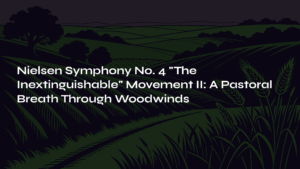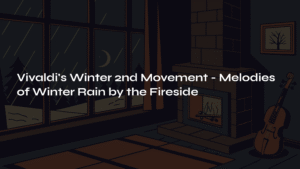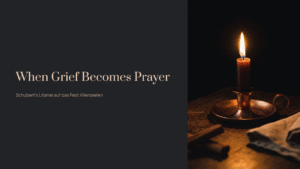Table of Contents

Music’s First Greeting
Some music takes your hand from the very first note. Vivaldi’s “Alla Rustica” RV 151 is exactly that kind of piece. This small concerto feels like a village festival—not flashy but authentic, not complex but profound.
In just over five minutes, we embark on a time journey to some small square in 18th-century Venice. Within the sonic tapestry woven by string instruments, I always find myself thinking about how powerful simplicity can be.

The Red-Haired Priest’s Rural Landscape
The 1720s, when Antonio Vivaldi composed this concerto, marked the peak of his creative output. While teaching at Venice’s Pietà conservatory and simultaneously pouring out operas and concertos, Vivaldi was mastering the art of expressing genuine emotion rather than merely showcasing technical prowess.
As the title “Alla Rustica” suggests, this piece embodies the “rustic style.” But the rusticity here isn’t simply crude or unsophisticated. It’s a deliberate return to natural rhythms and melodies, casting off the artificial splendor of urban life.
This concerto is scored for string orchestra and continuo, with two oboes joining only in the final movement. The form—where the entire ensemble sings with one voice without solo instruments—exemplifies the charm of a “concerto a quattro.”

A Small House with Three Rooms
The First Room: Presto – An Endless Dance of Motion
Upon opening the door, we’re immediately greeted by the relentless chorus of string instruments. The Presto movement epitomizes “moto perpetuo”—perpetual motion. Eighth notes surge like waves while violins engage in responsive dialogue with one another.
Listening to this music feels like watching farmers dance at a harvest festival. The rhythm is simple yet addictive, with subtle variations blooming within repetitive patterns. Vivaldi concludes this brief movement with a sudden shift to G minor—like the unexpected quiet that follows a festival’s end.
The Second Room: Adagio – A Moment When Time Stands Still
Sudden silence in the midst of noisy celebration. The Adagio movement forms the heart of this concerto. Brief but deep, understated but truthful. Within the harmonic resonance created by the strings, we pause to catch our breath and look inward.
Whenever I hear this section, a particular scene always comes to mind: a quiet afternoon in a country church, with sunlight streaming through stained glass windows. This short movement proves that music can sometimes communicate more than words ever could.
The Third Room: Allegro – Country Breezes from Two Oboes
In the final movement, Vivaldi offers us a special gift: two oboes join the ensemble. The warm, familiar timbre characteristic of woodwinds blends with the strings, achieving the true completion of “rustic style.”
Notable in this movement is the use of the Lydian mode. The frequent appearance of the raised fourth degree (C♯) creates a special color that’s neither our familiar major nor minor. This reflects the influence of Polish folk music and the “exotic” tastes popular throughout Europe at the time.

Depth Hidden in Simplicity
Listening to this concerto, I always think about how true beauty lies not in complexity but in simplicity. Instead of flashy virtuosity or intricate structures, Vivaldi captures our hearts with intuitive, natural melodies.
“Alla Rustica” isn’t simply music that imitates the countryside. It’s a musical expression of the human desire to escape urban complexity and return to something essential. This is why the piece continues to be beloved as film and television soundtrack music in our modern era.

Three Keys to Deeper Listening
First Key: Feel the Pulse of Rhythm
This piece’s greatest charm lies in its living sense of rhythm. Following the eighth-note patterns in the first movement especially, you can feel the music’s pulse—regular like a heartbeat yet brimming with vitality. Discover the life force created not by mere repetition, but through subtle changes and dynamic interplay.
Second Key: Listen to the Instruments’ Dialogue
Vivaldi writes the conversation between string instruments with remarkable skill. The melodies that violins exchange with each other, the harmonic foundation created by violas and cellos, and the voices of oboes joining in the final movement. Consciously listening to each instrument’s role will provide a much richer musical experience.
Third Key: Feel the Power of Silence
The true beauty of the second movement Adagio lies in the silence between notes. Vivaldi draws maximum emotion from minimal notes. In this section, let your ears rest from the accustomed fast tempo and feel the aesthetics of space that music creates.

The Power of Music Across Time
Why does Vivaldi’s “Alla Rustica” still move us 300 years later? Because this music contains humanity’s most essential emotions: joy, peace, and positive energy toward life.
Sometimes in our complex world, the simple things wield the most powerful force. This small concerto proves that point. In just over five minutes, we experience the magic of music that transcends time. And that magic lingers in our hearts long after the music ends.
If you want to understand how music transcends time, listen to Vivaldi’s “Alla Rustica.” Its rustic yet eternal, simple yet profound beauty awaits you.

Next Destination: Mahler’s Love Letter
Our musical journey that began with Vivaldi’s rustic beauty now heads toward a new destination. From an 18th-century Venetian village festival to an early 20th-century Viennese salon, from a five-minute concerto to ten minutes of deep meditation.
Mahler’s Symphony No. 5, Fourth Movement “Adagietto” is Gustav Mahler’s wordless love letter to Alma Schindler, who would become his lifelong companion. Born when Mahler met and fell in love with Alma in 1901, this movement was a special gift added to the symphony—originally planned as a four-movement structure—in the form of a love letter.
While Vivaldi’s “Alla Rustica” sang of rural simplicity through the chorus of string orchestra, Mahler’s Adagietto whispers the depths of love through strings and harp alone. Woodwinds, brass, and percussion all rest, leaving only the string section and harp to create a sweet, reflective atmosphere. Beginning with simplicity, we now enter a more intimate and personal emotional world.



